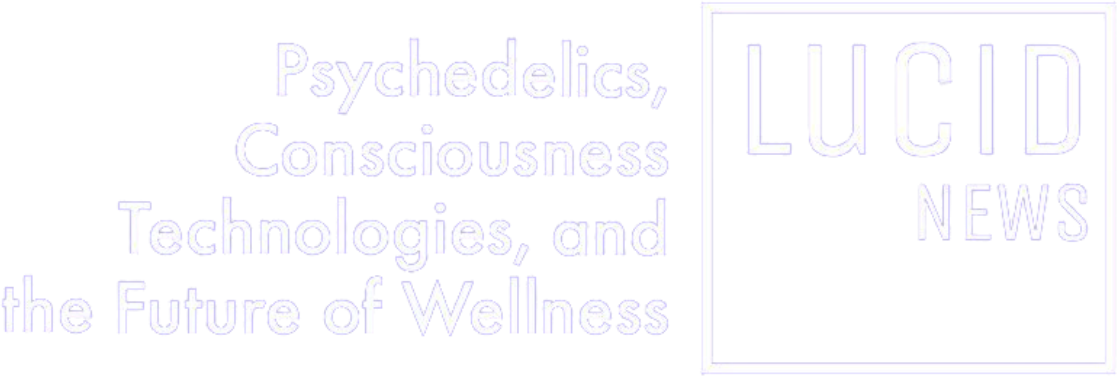New Study Shows How DMT Refreshes Perceptions

Scientists have long thought that the brain makes a strong distinction between visual input that comes through open eyes and mental images that arise when the eyes are closed, for instance while dreaming. But a study of the impact the molecule N,N, Dimethyltryptamine, better known as DMT, has on mental imagery turns this conventional understanding upside down, while shedding light on how the brain generates fresh perceptions.
Scientists from the Université de Toulouse, in collaboration with the Centre for Psychedelic Research at Imperial College London, used EEG signals to analyze the effects of DMT on the brain, focusing on the molecule’s ability to affect the direction in which waves of brain activity travel. The study, yet to be peer-reviewed, revealed that the visions produced by DMT give rise to similar patterns of brain activity to that generated by visual stimulation.
The findings surprised the lead author of the paper, cognitive neuroscientist Andrea Alamia. “When participants took DMT,” he explained, “despite having their eyes closed, the waves of brain activity were travelling as if participants were actually processing visual information, that is from the back to the front of the brain. In other words, their brain dynamics were the same as during visual stimulation, but participants actually had their eyes shut.”
Beyond this, the study found that bottom-up, forward travelling waves associated with visual input correlated to the increased intensity of the DMT experience. This activation of the sensory areas of the brain could explain why countless reports of DMT trips, such as the ones provided in Rick Strassman’s DMT: The Spirit Molecule, assert that the DMT experience is “so real it doesn’t fade with time like other things do.”
In normal waking states, brain wave activity flows in both bottom-up and top-down directions. Because the brain works in an economic way, it saves energy by forming predictive models of the world largely driven by top-down brain wave activity. The brain is “a hierarchical system,” commented Alamia, “in which the activity of higher regions encodes our model of the world (our prior belief), and the activity in the lower brain regions represents the sensory perceptions.”
Our way of thinking is shaped by brain waves that go down from the evolutionarily advanced areas of the brain, like the frontal lobe, towards the older, sensory areas of the brain, and in the process shape our perceptions to fit preconceived notions. Our predictive models interact with novel, sensory information that travels in a bottom-up direction from the older parts of the brain, which serves to disrupt and update habitual ways of seeing.
However, our prior beliefs and models of the world sometimes become overactive and begin to dominate our experience, making them resistant to updating from novel bottom-up information. Chris Timmermann, neuroscientist, research assistant at Imperial College London’s Centre for Psychedelic Research, and co-author of this paper, explained that the depressed, anxious brain can be seen as “a highly crystalized, rigid system with over-enhanced top-down processing that is resistant to being disrupted by bottom-up processes.” Nevertheless, in the case of this particular research, there is direct evidence to show that DMT massively generates an updating of that model in direct experience. The researchers suggest that DMT may have this effect by creating visionary experiences that mimic open-eyed vision.
The dataset of this analysis was taken from a previous pilot study, drawing on a total of 13 participants who were given an intravenous infusion of DMT at varying doses ranging between 7 and 20 mg in a placebo-controlled design. Throughout the duration of the experience, participants were instructed to keep their eyes closed, remaining in a resting state to ensure that the stimulation of visual input was generated internally.
In their previous work, the researchers explored the neurological similarities between the DMT experience and the dream state. Under the influence of DMT, they identified a reduction of alpha and beta brain waves, and an increase in theta and delta brain waves that are predominant in dreaming and in the onset of sleep. According to Timmermann, “We have good reason to think that DMT is similar to the dream state. Both states exhibit the same brain wave activity and are experientially and phenomenologically marked by presences that are not there in consensus, waking reality.” These existing parallels between the DMT state and dreaming lead researchers to speculate that bottom-up brain wave activity would also be increased in dream states.
Future research could apply this insight to naturally occuring visionary experiences, such as dreaming and hallucinatory states as experienced by schizophrenics. As they suggest in the report, “If consistent mechanisms were also found to underpin hallucinatory experiences in other sensory modalities – such as the auditory one, a basic principle underlying sensory hallucinations might be established.” This finding could have great implications for understanding the biological underpinnings of mystical states, suggesting that bottom-up brain activity is dominant during these experiences.
Regarding the practical, therapeutic value of these findings, the authors point out that the persistent positive changes that emerge from psychedelics lie in their ability to change perception. Understanding some of the mechanisms that underlie visionary experience could lead to many innovative, therapeutic approaches.
David Luke, senior lecturer of psychology at the University of Greenwich and co-editor of DMT Dialogues: Encounters with the Spirit Molecule, commends the ICL team’s approach to DMT research. “In terms of understanding the neuroscience of consciousness and the psychedelic experience, I think that Imperial’s research is opening up a lot of avenues.”
But Luke cautions that scientific models are not sufficient for unlocking the secrets of consciousness. “The caveat with most neuroscientific approaches,” he noted, “is that they tend to be somewhat reductionistic. Despite this, Imperial are still doing a good job as they are using ‘neurophenomenology’ to try and marry up the nuances of subjective experience with neurological data.”The study was funded by Timmermann’s PhD grant from the Chilean government, Comisión Nacional de Investigación Científica y Tecnológica de Chile (CONICYT).
Image: Neuroscientist, and research assistant at Imperial College London’s Centre for Psychedelic Research, Chris Timmermann briefs a research participant in the lab prior to ingesting DMT.









